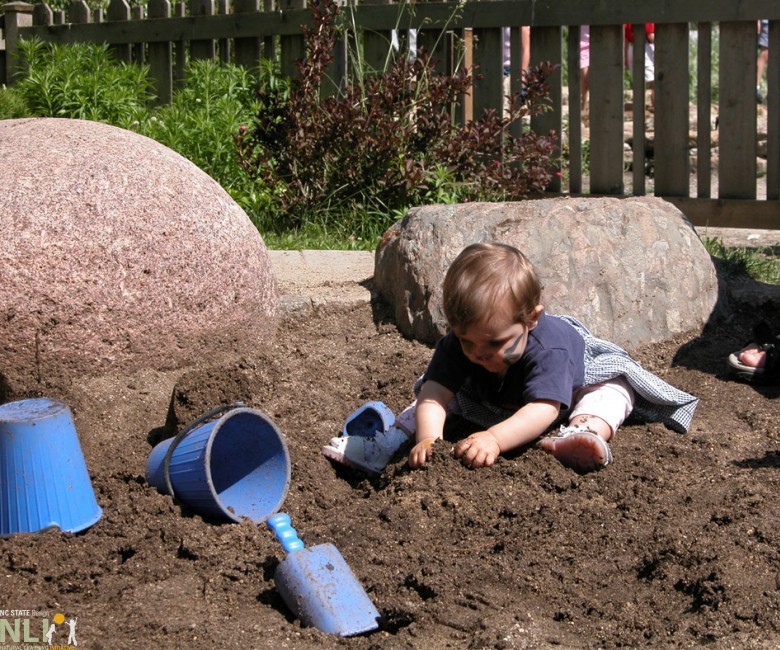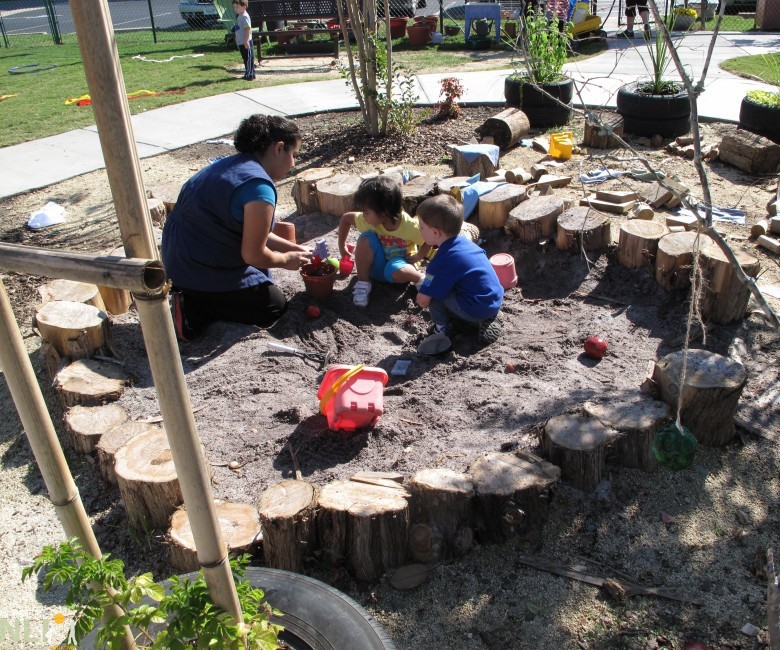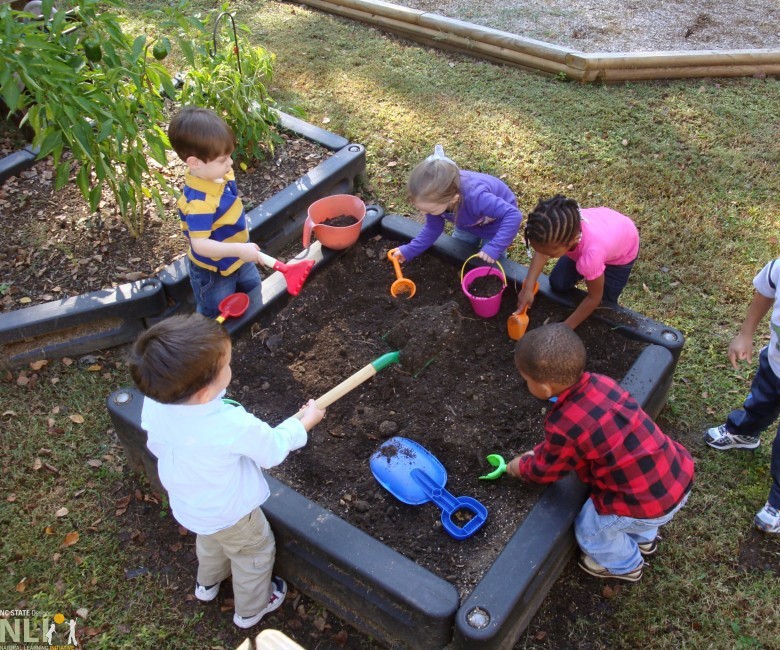The Green Desk
Questions About Digging in the Dirt
Is it really ok to have a dirt pile for the children to dig in on your playground? If so is a cover needed?
From the North Carolina Rated License Assessment Project:
Yes, dirt is fine as an alternative to sand play. To be considered “dirt play” there must be evidence that providing dirt play is intentional; meaning that there is enough to dig in, scoop, and pour and that the dirt is not too firmly packed to allow for these activities. Additionally, there should be materials or tools provided for children to use such as shovels, etc. Rely on guidance from CEHP regarding the necessity of a cover for contained dirt play areas.
From the North Carolina Division of Child Development and Early Education:
A dirt area would be acceptable but would need to be maintained.
From the North Carolina Children’s Environmental Health Branch:
Hand washing is required after outdoor activity. Sandboxes are required to allow for proper drainage, covered when not in use and kept clean. Similar recommendations would be made for a contained “dirt area”. In addition, the history and source of the soil would be important information. Where was the dirt obtained? The concern is potential contaminants such as lead or pesticides.
If we do have dirt for children to dig in, what type of dirt should it be….dirt from the earth or should we buy topsoil/dirt from a nursery?
From the North Carolina Rated License Assessment Project:
There is not a specific type of dirt/soil required for the rating scales. If purchasing soil, child care providers should read the label carefully to make sure there are no hazardous chemicals or fertilizers included in the mixture.
From the North Carolina Division of Child Development and Early Education:
We would defer to Environmental Health on this topic.
From the North Carolina Children’s Environmental Health Branch:
Dirt should come from a source that is free of contaminants such as lead and pesticides.
Overview from the North Carolina Outdoor Learning Environments Alliance:
There is tremendous value in having youngsters experience, work and play with dirt. In stating this, we are not suggesting activities using the dirt that you find at the edge of your parking lot that may contain car oil run-off or animal feces. Rather we are alluding to the rich soil that exists in your school or home garden or in your woods. The friable feeling of dirt, the fragrance of it and the different types of soil youngsters can discover and learn about all contribute to a rich sensory experience for children.
Our state has such a broad variety of soils. We have the clays of the Piedmont, the stony soils of the Mountains, the sandy and peaty soils of the Coastal Plain. Each type of soil allows children to experience an array of textures and encourages them to explore and to make discoveries. Here are some suggested activities to get you started:
- Investigate what kind of soil you have in your play yard – under the trees, by the garden – in the different places that make up your outdoor learning environment.
- Have children bring in a baggie of soil from their own backyard and encourage them to compare them.
- Bring in different types of soil for children to explore; rich mulches, topsoils, silts, sands and clay.
- Make your own soil using leaves, sand and soil from the ground and explore a range of soil recipes.
- Investigate the creatures who live in the soil; earthworms, insects and rolly pollies. Look for pebbles and other natural matter in the soil.
- When it rains allow children to discover how the soil turns into mud and malleable clay.
- Provide opportunities for children to turn that rain soaked soil into mud pies and pots and to sculpt soil when it’s wet.
- Use your existing flower beds and raised beds for digging and discovery.
- Shake soil form the school yard in a jar and discover what floats, what remains suspended and what settles to the bottom of the jar.
The possibilities that explorations with soil/dirt provide for learning and sensory experiences for children are endless! So, start digging!
*This post is from a series of FAQ about child care outdoor learning environment regulations in North Carolina. Please see the intro post, Child Care OLE Regulation FAQ in North Carolina.




